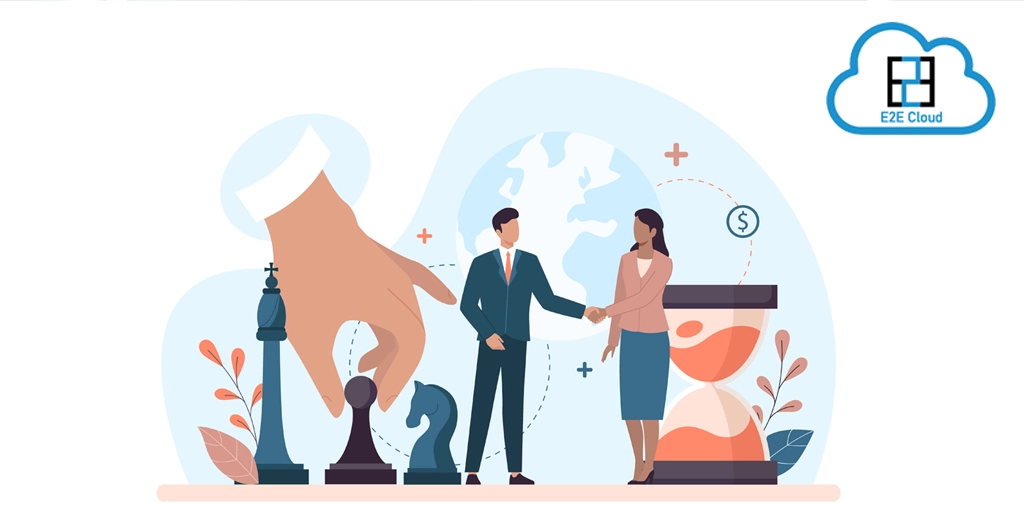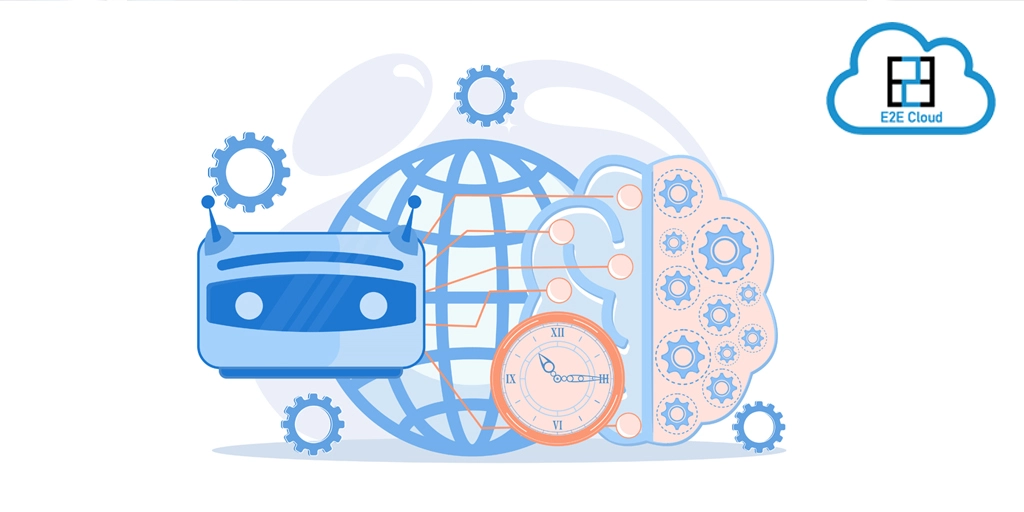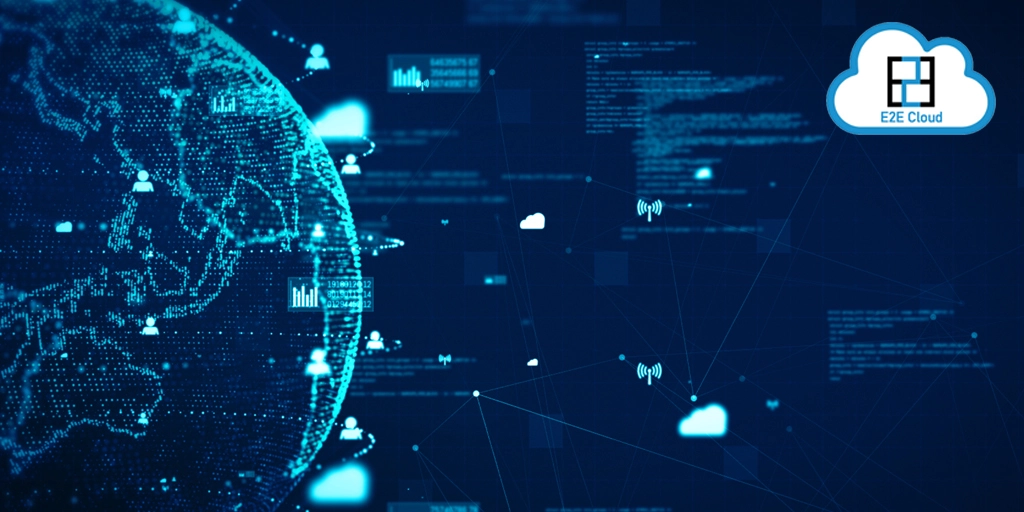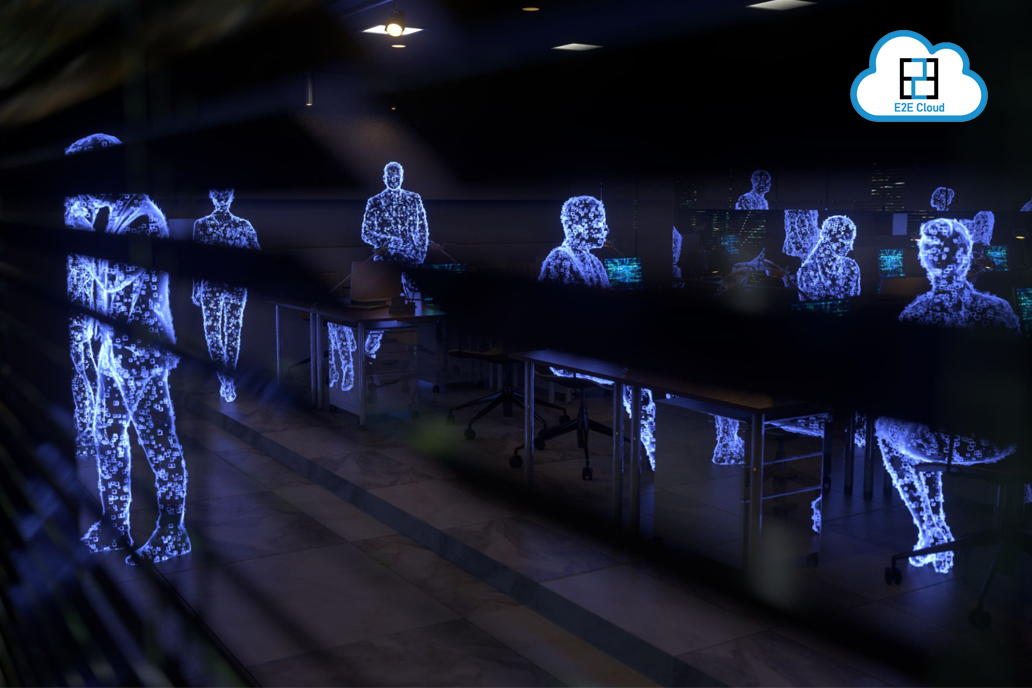Introduction
Artificial Intelligence (AI) is reshaping industries and revolutionizing the way we interact with technology. Bill Gates famously emphasized its transformative power, predicting that AI would impact various aspects of our lives. One prominent example of this AI revolution are Large Language Models like ChatGPT, Google Bard and Llama, which are groundbreaking AI chatbots powered by advanced machine learning techniques. Since its introduction in November 2022, ChatGPT has captured the world's attention and showcased the immense potential of AI-driven conversational tools. Other LLMs have followed suit in 2023.
What Is an LLM?
An LLM, or large language model, is a type of artificial intelligence (AI) that has been trained on a massive dataset of text and code. This allows LLMs to generate text, translate languages, write different kinds of creative content, and answer your questions in an informative way. LLMs are still under development, but they have the potential to revolutionize the way we interact with computers.
How Do LLMs Work?
LLMs work by using statistical models to analyze vast amounts of data. These models learn the patterns and connections between words and phrases, which allows LLMs to generate text that is similar to human-written text. LLMs also use a technique called self-supervised learning, where they are trained to predict the next word in a sentence, given the previous words. This helps LLMs to learn the context of words and phrases, which is essential for generating natural-sounding text.
What Are the Benefits of Using LLMs?
LLMs have many benefits:
- They can be used to generate text that is indistinguishable from human-written text. This can be used for a variety of purposes, such as creating marketing materials, generating creative content, or even writing books.
- They can be used to translate languages accurately and fluently. This can be a valuable tool for businesses and individuals who need to communicate with people who speak other languages.
- They can be used to write different kinds of creative content, such as poems, code, scripts, and musical pieces. This can be a great way to express yourself or to create something new and exciting.
- They can be used to answer your questions in an informative way, even if they are open ended, challenging, or strange. This can be a great way to learn new things or to get help with a problem.
What Are the Risks of Using LLMs?
LLMs also have some risks:
- They can be used to spread misinformation. LLMs can be trained on data that is biased or inaccurate, which can lead to them generating text that is also biased or inaccurate. This can be a problem if LLMs are used to generate news articles or other types of content that is intended to be informative.
- They can be used to create deep fakes. Deep fakes are videos or audio recordings that have been manipulated to make it look or sound like someone is saying or doing something they never said or did. LLMs can be used to create deep fakes that are very realistic, which can be used to deceive people or to damage someone's reputation.
- They can be used to discriminate against people. LLMs can be trained on data that contains biases, which can lead to them generating text that is also biased. This can be a problem if LLMs are used to make decisions about people, such as who gets a loan or a job.
- They can be used to automate tasks that are currently done by humans. This could lead to job losses, especially in jobs that involve repetitive tasks that can be automated by LLMs.
Some Examples of How LLMs Are Being Used Today
LLMs are being used in a variety of ways today:
- Chatbots: LLMs are being used to power chatbots that can interact with people in a natural way. This can be used for customer service, marketing, or even just for fun.
- Virtual Assistants: LLMs are being used to power virtual assistants like Amazon Alexa and Google Assistant. These assistants can help you with tasks like setting alarms, playing music, and getting directions.
- Content Generation: LLMs can be used to generate text, code, scripts, and musical pieces. This can be used for a variety of purposes, such as creating marketing materials, generating creative content, or even writing books.
- Translation: LLMs can be used to translate languages accurately and fluently. This can be a valuable tool for businesses and individuals who need to communicate with people who speak other languages.
- Research: LLMs are being used by researchers in a variety of fields, such as natural language processing, machine learning, and artificial intelligence. LLMs can be used to generate new insights and to solve problems that have been intractable to AI in the past.
- Education: LLMs are being used in education to personalize learning and to provide feedback to students. This can help students to learn more effectively and to reach their full potential.
What Sets LLMs Like ChatGPT, Google Bard, and Llama Apart?
LLMs like ChatGPT, Google Bard, and Llama are all large language models that have been trained on massive datasets of text and code. They can all be used to perform a variety of tasks, such as generating text, translating languages, and writing different kinds of creative content.
However, there are some key differences between these LLMs.
- ChatGPT: ChatGPT is a generative pre-trained transformer model developed by OpenAI. It is known for its ability to generate realistic and engaging text, and it has been used to create chatbots, virtual assistants, and other applications.
- Google Bard: Google Bard is a factual language model from Google AI. It is trained on a massive dataset of text and code, and it is able to generate text, translate languages, write different kinds of creative content, and answer your questions in an informative way.
- Llama: Llama is a large language model developed by Meta AI. It is designed to be more efficient and accessible than other LLMs, and it is suited for applications where resource usage is a critical factor.
How Do LLMs Improve Over Time?
LLMs improve over time in a number of ways, including:
- Increased Training Data: LLMs are trained on massive datasets of text and code. As more data is added to the training dataset, the LLM becomes better at understanding and generating language.
- Improved Algorithms: The algorithms used to train LLMs are constantly being improved. This leads to LLMs that are more powerful and accurate.
- New Architectures: Researchers are constantly developing new architectures for LLMs. These new architectures can lead to LLMs that are more efficient and easier to train.
- Better Hardware: LLMs require a lot of computing power to train. As hardware technology improves, LLMs can be trained on larger datasets and with more complex architectures.
LLMs are still under development, but they have the potential to grow further. They are already being used in a variety of applications, and their use is likely to expand in the years to come.
Can LLMs Understand Context and Nuances in Language?
LLMs can understand context and nuances in language to some extent, but they are not perfect. They can sometimes misunderstand the context of a conversation or the meaning of a word, leading to errors in translation, incorrect answers to questions, or even harmful or offensive content. As LLMs continue to develop, they will become better at understanding context and nuances in language, but it is important to be aware of their limitations and to use them with caution.
How Can Businesses Benefit from LLMs?
LLMs can benefit businesses in a variety of ways, including:
- Generating Text: LLMs can be used to generate realistic and engaging text, such as articles, blog posts, and even creative writing. This can save businesses time and money on content creation, and it can help them to reach a wider audience.
- Translating Languages: LLMs can be used to translate languages quickly and accurately. This can help businesses to expand into new markets and to communicate with customers in their native language.
- Creative Content: LLMs can be used to write different kinds of creative content, such as poems, code, scripts, musical pieces, email, letters, etc. This can help businesses to be more creative and to produce more engaging content.
- Information: LLMs can be used to answer your questions in an informative way, even if they are open ended, challenging, or strange.
- Data Analysis: LLMs can be used to identify patterns in data, such as customer behavior or fraud patterns. This can help businesses to make better decisions and to improve their operations.
- Creating New Products and Services: LLMs can be used to create new products and services, such as personalized recommendations or chatbots. This can help businesses to stay ahead of the competition and to meet the needs of their customers.
Overall, LLMs have the potential to be a powerful tool for businesses of all sizes. They can help businesses to save time and money, to reach a wider audience, and to be more creative and innovative. As LLMs continue to develop, they will become even more powerful and versatile, and they will be able to help businesses in even more ways.
What Role Do LLMs Play in Conversational AI?
LLMs play a key role in conversational AI. They are used to power chatbots, virtual assistants, and other AI-powered applications that can interact with humans in a natural language way. LLMs can understand and generate text, translate languages, and answer questions in an informative way. This makes them ideal for conversational AI applications, where the goal is to create a seamless and engaging user experience.
Here are some specific examples of how LLMs are used in conversational AI:
- Chatbots: LLMs are used to power chatbots that can answer customer questions, provide support, or even just chat with customers for fun.
- Virtual Assistants: LLMs are used to power virtual assistants that can help users with tasks such as setting alarms, making appointments, or playing music.
- Information: LLMs are used to power question answering systems that can answer users' questions about a variety of topics.
Are There Privacy Concerns Related to LLMs?
Yes, there are a number of privacy concerns related to LLMs. These concerns include:
- Data Collection: LLMs are trained on massive datasets of text and code. This data can include personal information, such as names, addresses, and email addresses. If this data is not properly anonymized, it could be used to track users or to identify them.
- Privacy of Conversations: LLMs can be used to create chatbots and other AI-powered applications that can interact with humans in a natural language way. This means that LLMs could be used to collect data about users' conversations, such as what they talk about, who they talk to, and when they talk. This data could be used to track users or to target them with advertising.
- Bias: LLMs are trained on massive datasets of text and code. This data can reflect the biases of the people who created it. If this bias is not properly addressed, it could lead to LLMs generating text that is biased or offensive.
- Misinformation: LLMs can be used to generate text, translate languages, and answer questions. This means that they could be used to create misinformation or to spread propaganda. For example, an LLM could be used to generate fake news articles or to create social media posts that are designed to mislead people.
How Can Privacy Concerns Be Addressed by an LLM
It is important to be aware of these privacy concerns when using LLMs. Users should carefully consider the privacy implications of using LLMs, and they should only use LLMs from companies that have a good track record of protecting user privacy.
Here are some tips for protecting your privacy when using LLMs:
- Read the privacy policy of the company that is providing the LLM. This will tell you how the company collects and uses your data.
- Only use LLMs from companies that have a good track record of protecting user privacy. There are a number of companies that have been criticized for their privacy practices, so it is important to do your research before using an LLM.
- Be careful about what information you provide to the LLM. The more information you provide, the more the LLM can learn about you.
- Be aware of the potential for bias in the LLM's output. LLMs are trained on massive datasets of text and code, which can reflect the biases of the people who created it.
- Use the LLM in a safe and responsible way. Do not use the LLM to generate harmful or offensive content.
Can LLMs Replace Human Writers?
- LLMs cannot replace human writers entirely, but they can automate some tasks that are traditionally done by human writers, such as generating text, translating languages, and answering questions. This can free up human writers to focus on more creative and strategic tasks.
- However, LLMs are still in their early stages of development, and they are not yet capable of producing high-quality creative content on their own. Human writers will still be needed to provide creative input, to edit and proofread text, and to research topics.
- As LLMs continue to develop, they will become more powerful and versatile. It is possible that they will eventually be able to replace human writers entirely for some tasks. However, it is also possible that human writers and LLMs will work together in the future to create even more amazing content.
How Do LLMs Differ from Traditional Search Engines?
LLMs are more powerful and versatile than traditional search engines. They are trained on massive datasets of text and code, and they can understand and generate text, translate languages, and answer questions in a more comprehensive and informative way. LLMs are also still in their early stages of development, and they are constantly learning and improving. This means that they are likely to surpass traditional search engines in terms of performance and accuracy in the future.
How Do LLMs Impact the Fields of Education and Research?
LLMs can impact educational and research fields in a number of ways:
- Personalized Learning: LLMs can be used to create personalized learning experiences for students. This can be done by tailoring the content and pace of instruction to the individual student's needs and interests.
- Automated Grading: LLMs can be used to automate grading for large classes. This can free up teachers' time so they can focus on more important tasks, such as providing feedback to students.
- Research Assistance: LLMs can be used to assist researchers with tasks such as data analysis, literature review, and writing. This can save researchers time and effort, and it can help them to produce more high-quality research.
Can an LLM Be Used to Cheat in Academia?
Yes, LLMs can be used to cheat in academia. LLMs can be used to generate text and answer questions in a way that is indistinguishable from human-produced content. This means that students could use LLMs to generate essays, translate exams, and answer questions on tests.
There have already been cases of students using LLMs to cheat in academia. In 2022, a student at the University of Virginia was caught using an LLM to generate a paper for a class. The student was expelled from the university. There are a number of ways to prevent students from using LLMs to cheat in academia. One way is to use plagiarism detection software. Plagiarism detection software can identify text that has been copied from other sources, including LLM-generated text. Another way to prevent cheating is to use proctoring software. Proctoring software can monitor students' screens and webcams to ensure that they are not cheating.
It is important to be aware of the potential for LLMs to be used to cheat in academia. Students should be educated about the risks of cheating and the consequences of being caught. Universities should also take steps to prevent cheating, such as using plagiarism detection software and proctoring software.
How Do LLMs Contribute to Language Translation?
LLMs can contribute to language translation in a number of ways, including creating large datasets of parallel text, improving the accuracy of translation, generating more natural-sounding translations, and translating languages that are not well-represented in traditional translation datasets. LLMs have the potential to revolutionize the field of language translation by making translation more accurate, natural, and efficient. Here are some specific examples of how LLMs are being used to improve language translation:
- Google Translate uses an LLM called Transformer to translate text between over 100 languages.
- Microsoft's DeepL uses an LLM called Transformer-XL to translate text between 26 languages.
- Facebook's Fairseq uses an LLM called Marian to translate text between over 100 languages.
These LLMs are still under development, but they have already achieved state-of-the-art results in language translation..
How do LLMs Handle Multilingual Interactions?
LLMs can handle multilingual interactions by using multilingual modeling. This allows them to understand and generate text in multiple languages. LLMs that are trained on multilingual data are becoming increasingly common and offer a number of advantages over LLMs that are only trained on a single language. For example, they can be used to translate text between languages, generate text in multiple languages, and identify patterns in multilingual data.
What Precautions Should Be Taken to Avoid Bias in LLM-Generated Content?
LLMs are trained on massive datasets of text and code, which can reflect the biases of the people who created it. To avoid bias in LLM-generated content, it is important to use a diverse dataset, be aware of the context, and use a human review process. Machine learning techniques can also be used to detect bias, but they are not as accurate. There is no foolproof way to avoid bias in LLM-generated content, but by taking these precautions, it is possible to mitigate bias.
Can LLMs Comprehend Technical Subjects?
LLMs can comprehend technical subjects, but they are still under development. They can be trained on massive datasets of text and code, which can include technical information. This allows them to understand and generate text about technical subjects, but they can still make mistakes. LLMs can be used to answer questions, generate text, and translate languages about technical subjects. As LLMs continue to develop, they are likely to become even better at comprehending technical subjects. LLMs can be used to comprehend technical subjects:
- Use a diverse dataset that includes technical information from a variety of sources.
- Be specific when asking questions or generating text about technical subjects.
- Use a human review process to check the accuracy of LLM-generated content.
Do LLMs Require Continuous Human Intervention?
LLMs do not require continuous human intervention, but they can benefit from it. LLMs are trained on massive datasets of text and code, which can include harmful or misleading information. Human intervention can help to identify and remove this information from LLM outputs. It can also help to improve the accuracy and reliability of LLM outputs. Overall, LLMs can benefit from human intervention, but it is not essential. Human intervention can help to ensure that LLM outputs are accurate, reliable, and safe.
Can LLMs Engage in Creative Brainstorming?
LLMs can engage in creative brainstorming by generating ideas, solving problems, and improving creativity. LLMs are trained on massive datasets of text and code, which can include creative content. This allows them to generate creative text, translate languages, and answer questions in a way that is both original and creative. To use LLMs for creative brainstorming, it is important to be specific when asking for ideas, be open-minded to the ideas that the LLM generates, and use a human review process to select the best ideas. LLMs are still under development, but they have the potential to be powerful tools for creative brainstorming. They can help businesses generate new ideas, solve problems, and improve creativity.
Conclusion
Large Language Models are a transformative force in AI technology, with applications spanning various industries. From conversational AI to content creation and beyond, LLMs like ChatGPT, Google Bard, and Llama are pushing the boundaries of what's possible in human-computer interaction. As these models continue to evolve, they hold the promise of reshaping the way we communicate, learn, and engage with information in a rapidly evolving digital landscape.
To deploy enterprise-grade LLMs, try E2E cloud today. Write in to sales@e2enetworks.com.










